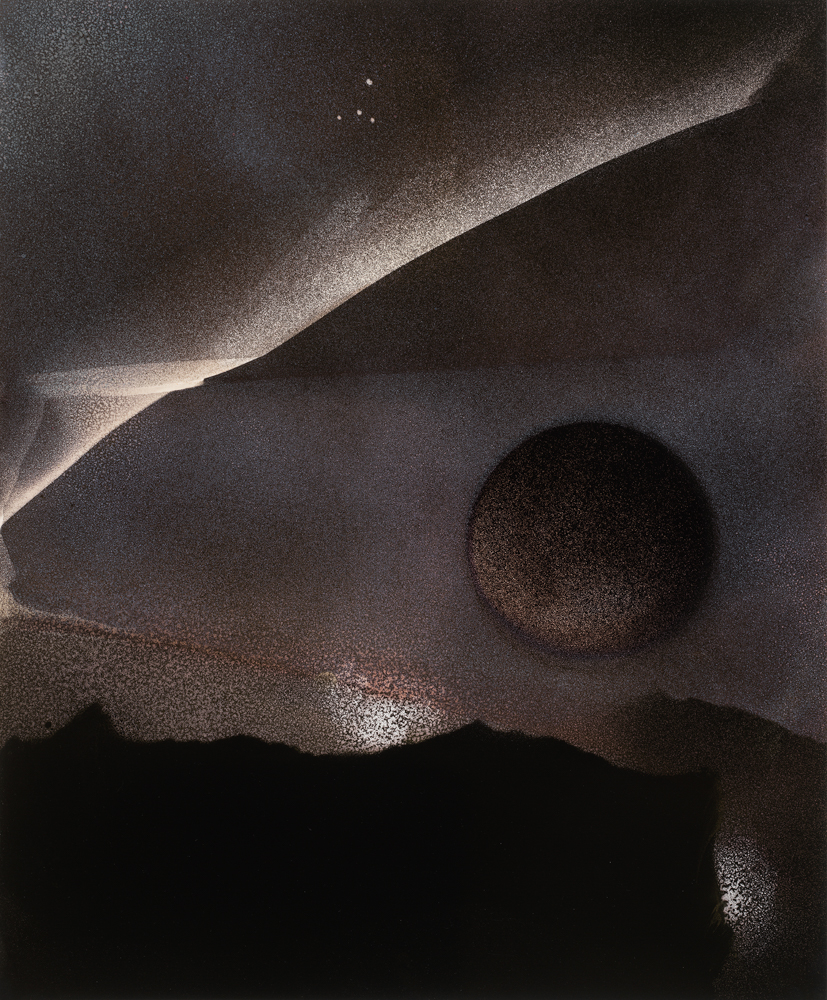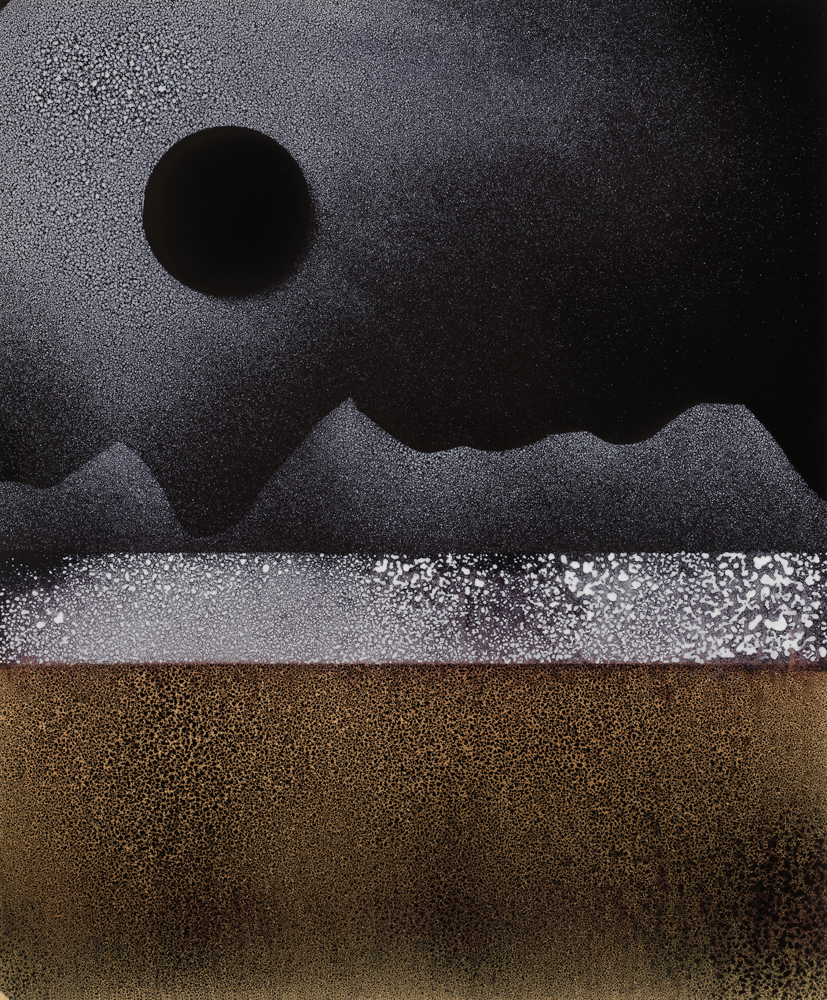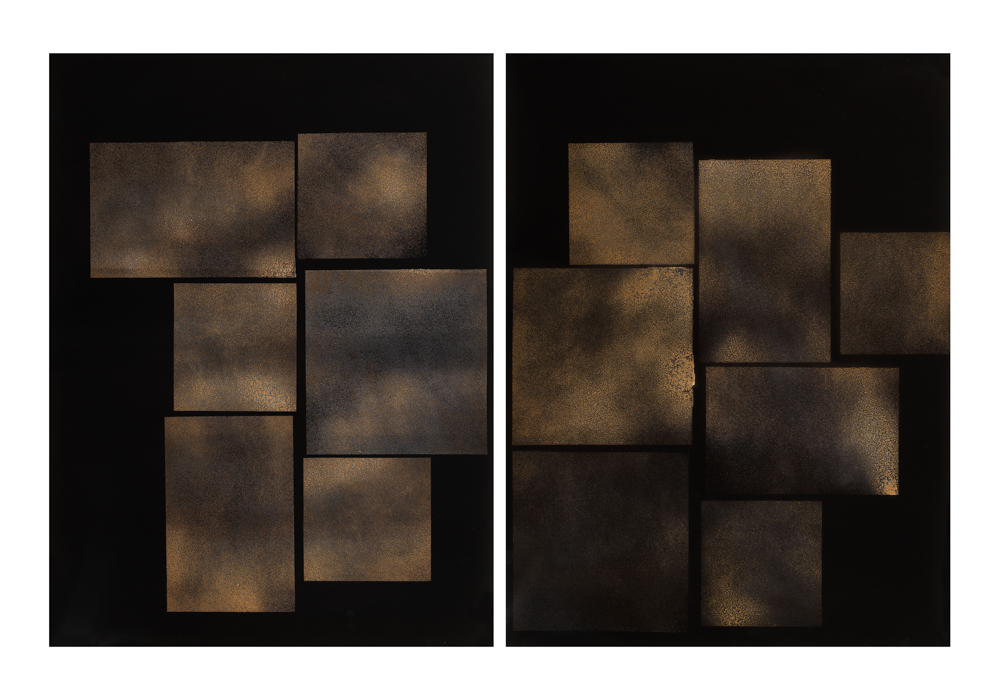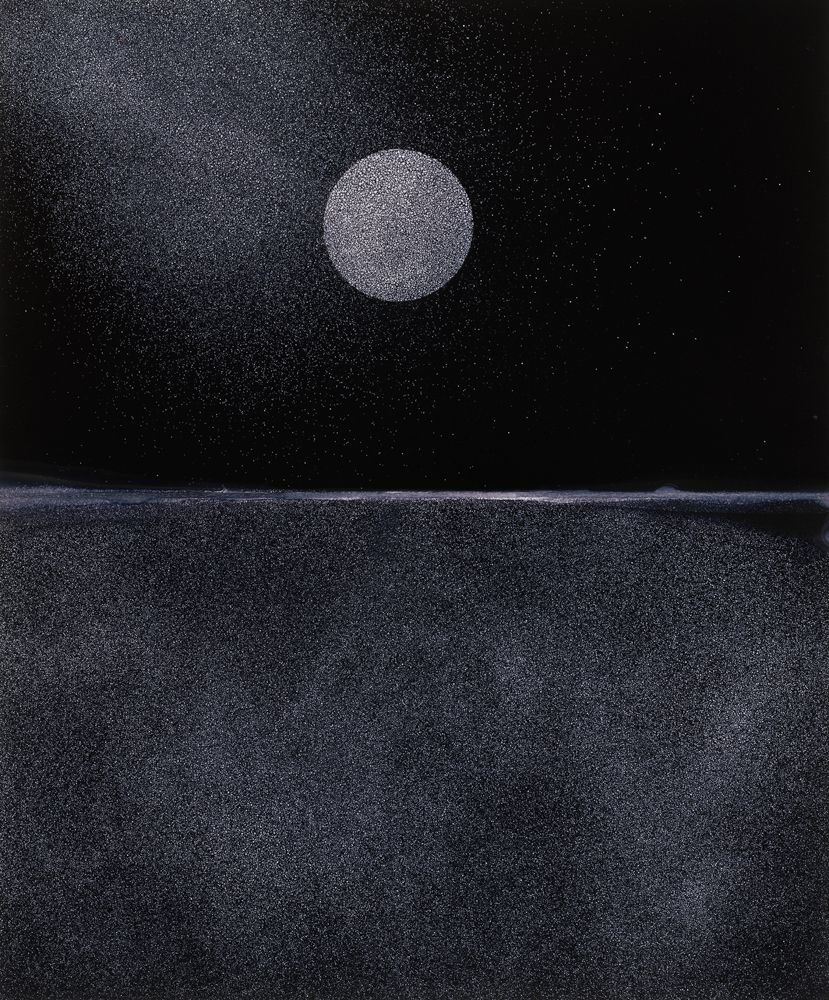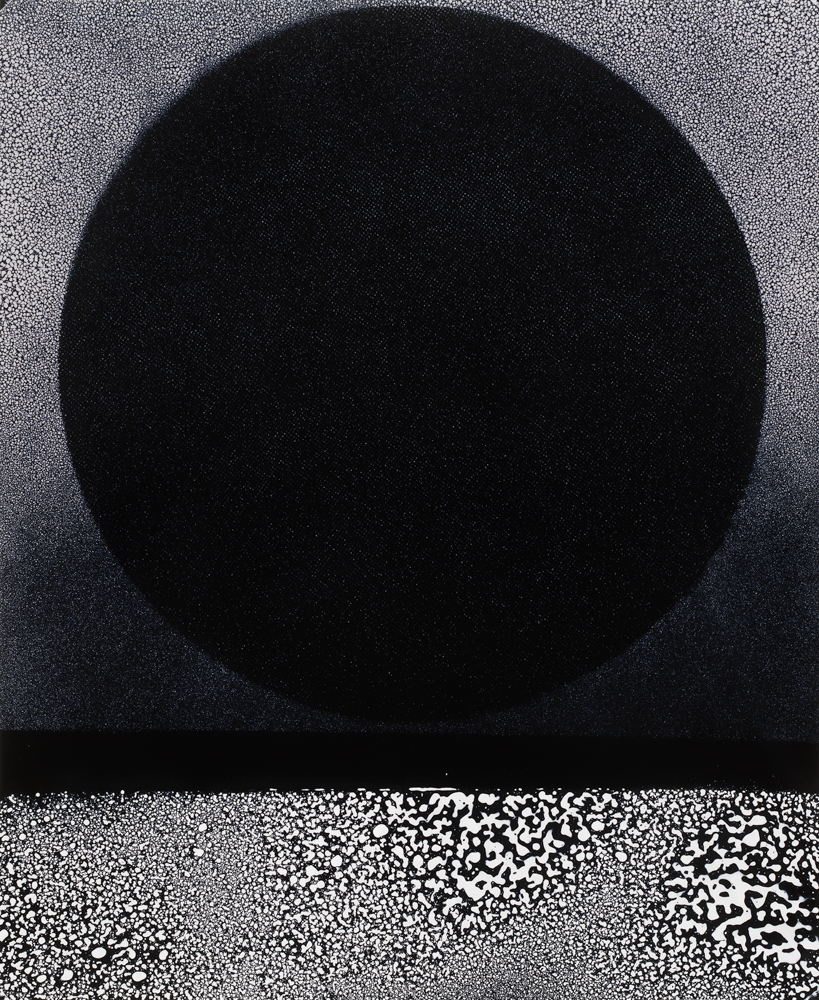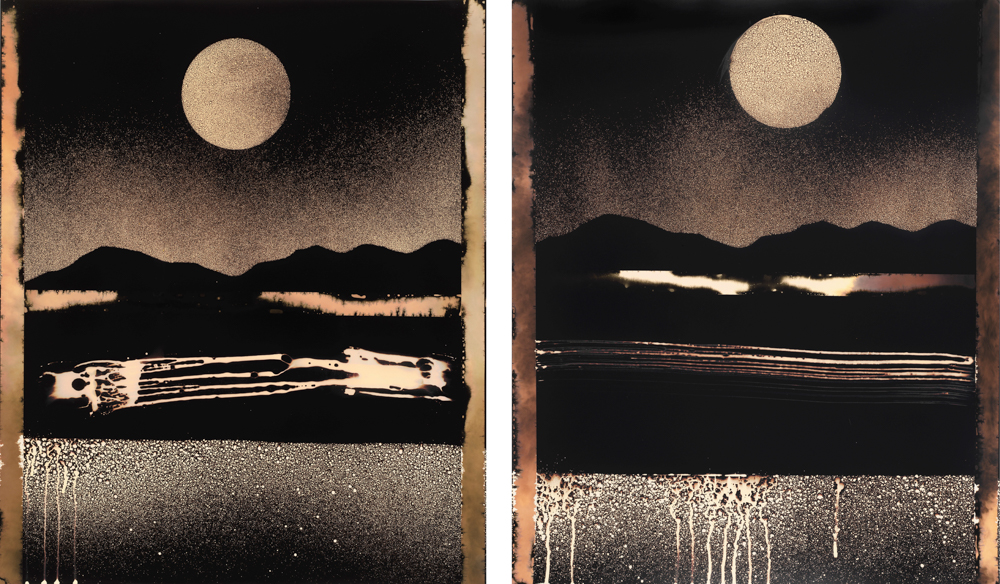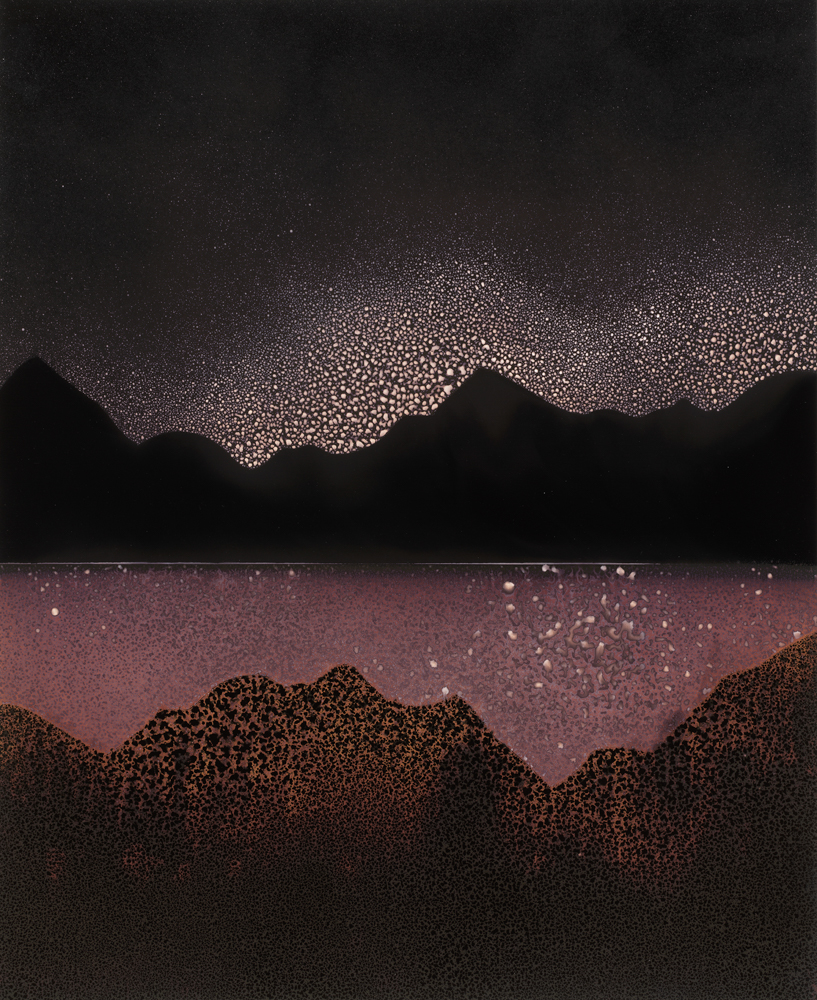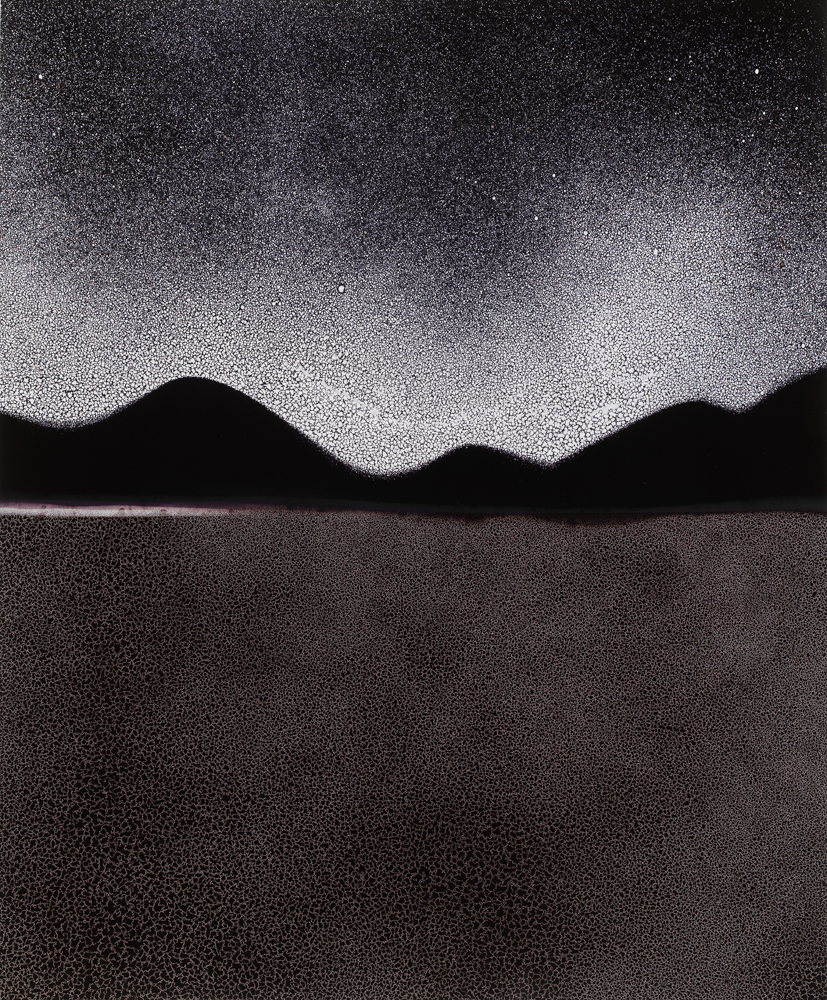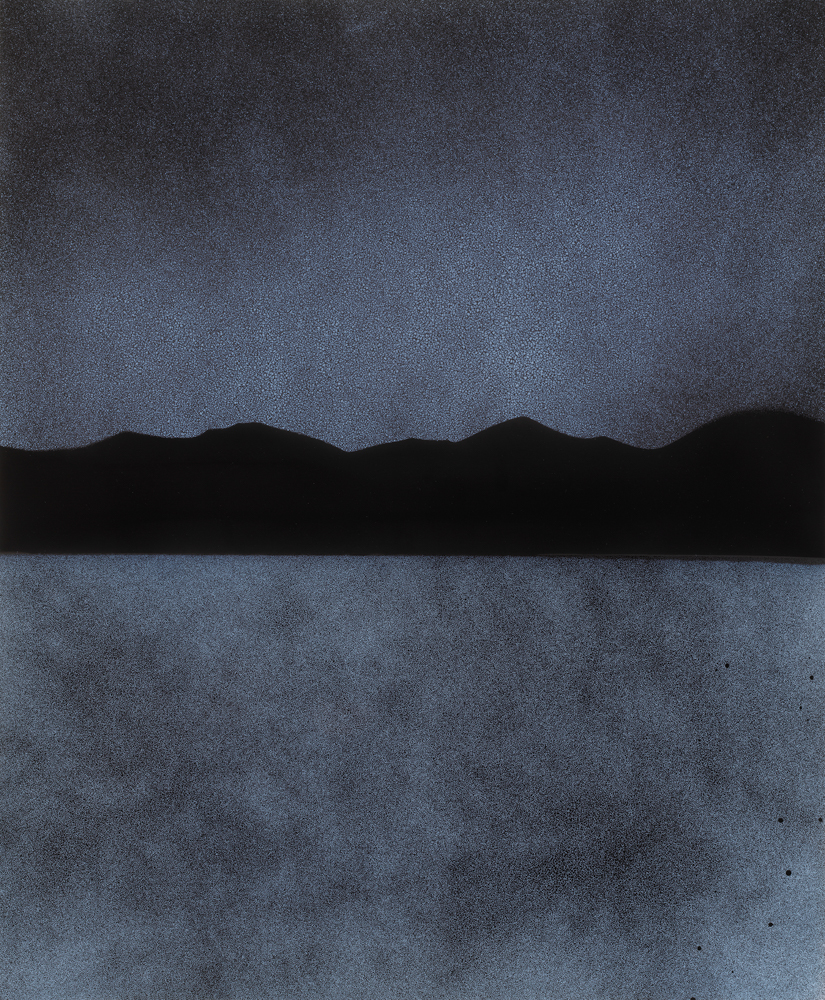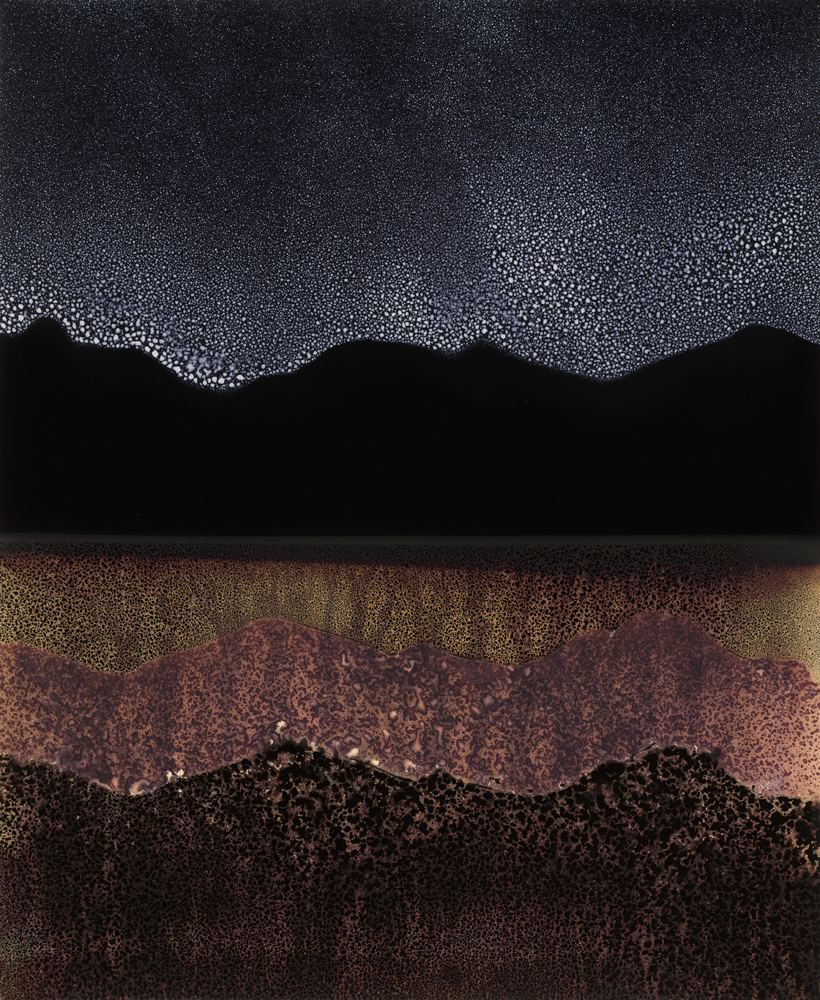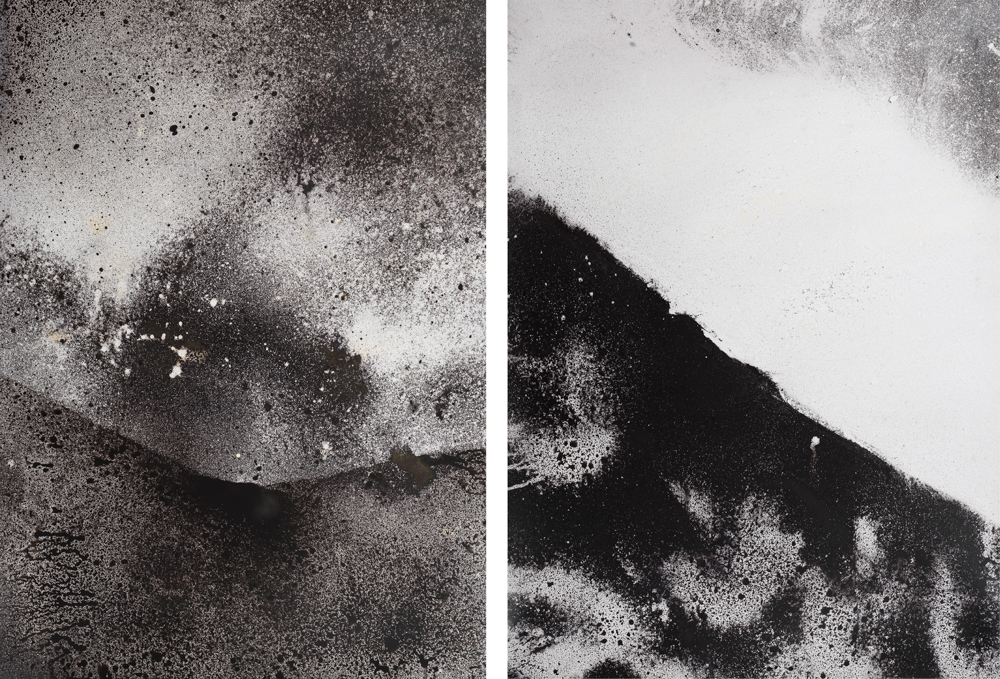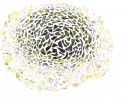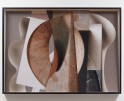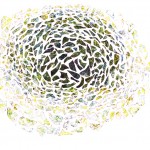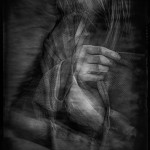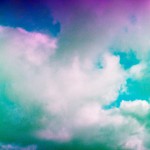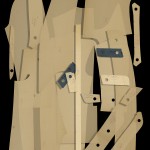LUMINOUS VISIONS: CHUCK KELTON
This week on Lenscratch, we look at a selection of artists creatively engaging with analog photographic processes within their practice.
Chuck Kelton’s transcendent images masterfully organize compositional elements into sky, earth, and sea, evoking emotions of awe and grandeur from familiar darkroom materials and antiquated photographic processes. Kelton is a master printer who has worked for several historically significant photographers such as Larry Clark, Helen Levitt, Danny Lyon, Lillian Bassman, Saul Leiter, and Mary Ellen Mark. Although he is an expert with complete control in the darkroom, he allows chance and chaos to be a part of his own practice. His photograms (exposing paper to light) and chemograms (exposing photographic paper to developer and fixer) are coaxed from the materials with which they are made, yet he creates a space for the mystery to occur.
As a painter would apply a brush, Kelton summons vibrant colors from the monochromatic palate of silver gelatin paper. The process of making the images can take weeks as Kelton reworks the print in parts, approaching a specific section with bleach, developer, or metals, then letting the prints rest as he considers the changes. These manipulations of the prints are not unlike dodging and burning in the darkroom; bleach lightens part of the image while the developer darkens. Finally, he may add metals such as selenium, gold chloride, or iron for additional color. These atmospheric images reference the natural world, yet they are, in fact, fictions, transgressions of photography’s burdensome responsibility to document events as they unfold. The work has a gestural quality, a performance specific to each unique print. Kelton uses his extensive experience in the darkroom to evoke emotion from the landscapes of his imagination, transporting the viewer to a nonexistent land, familiar yet foreign.
Alison Bradley Projects , NYC, Von Lintel Gallery, Los Angles, Galerie Miranda, Paris
Chuck Kelton makes chemograms and photograms using traditional photosensitive papers and darkroom chemicals to transform light into abstract landscapes inspired by nature. Kelton’s work stems from a 35-year career as a master black and white printer for some of the most important photographers in history – Ansel Adams, Danny Lyon, Steven Meisel, Lillian Bassman, Saul Leiter and Mary Ellen Mark, to name a few. After decades of working with negative based imagery, Kelton turned his eye towards a reduced pictorial space. He stripped photographic materials down to the studs, building essential, minimalist compositions of black and white lines. In subsequent series, he pushed color back into the structure by exploring early processes like toning with precious metals (both new and expired) such as gold chloride, selenium and iron.
Though abstract, Kelton’s works are representative, often simulating seascapes or other-worldly environments. At the same time, they are evocative of other medias such as watercolors or oil paintings, charcoal drawings or pastels. However, no such actual landscape or outside medias exist in the creation of his work, as his practice foregoes cameras, lenses and negatives. A photogram is the result of exposing photographic paper to light—writing with light; whereas the image in a chemogram is the outcome of exposing photographic paper to developer and fixer—painting with chemistry. In many of Kelton’s most recent works he combines chemogram and photogram techniques. The shift is marked with a cracked, folded horizon line separating swirling tones from smooth, matte black. Each work by Kelton is entirely unique, one-of-a-kind.
In a quote about Kelton in the LA Times, Leah Ollman states, “Landscape imagery always registers internal as much as external phenomena, and Kelton makes sure that we know he is not just transcribing nature by titling most of the images “A View, Not From a Window.” These expansive vistas originate in the dark rooms of the studio and the self.” In his work, a tension between light and dark always exists. So does control over the medium and the act of letting go, visible most in Chuck’s larger works “Translated from a Child”.
Kelton calls himself a romantic in a traditional sense, with an intellectual need to exist in a visually conceptual conversation. His practice is a conversation between his emotions, ideas and the materials. His most successful works transcend a need to represent non-photographic objectivity while creating the appearance of a natural phenomenon. These works are deeply personal, produced in a deliberate and spontaneous practice while searching for a visual vocabulary. They render both unique and universal, defying their own medium. Shelton Walsmith describes Kelton’s work as “Inert and visceral as slabs of slate or plates of scorched metal, dove belly gray to gunpowder black, the works render dawn by threatening unending night. While ambiguity is suspended across the range of Kelton’s alchemy, specificity reigns in the emotional impact that is calculated and delivered. The accidental is an anomaly, purpose is the process itself”.
When most of photography went digital, Kelton saw it as an opportunity to spend more time on his personal work, and his personal career has flourished. He has been featured in numerous exhibitions and publications. His work is in the collections of the Museum of Fine Arts, Boston; Bibliothéque Nationale de France; Norton Museum of Art, West Palm Beach, Florida; International Center of Photography, New York; and New York Public Library; among others.
Posts on Lenscratch may not be reproduced without the permission of the Lenscratch staff and the photographer.
Recommended
-
The Female Gaze: Alysia Macaulay – Forms Uniquely Her OwnDecember 17th, 2025
-
Bill Armstrong: All A Blur: Photographs from the Infinity SeriesNovember 17th, 2025
-
Robert Rauschenberg at Gemini G.E.LOctober 18th, 2025
-
Erin Shirreff: Permanent DraftsAugust 24th, 2025
-
Shelagh Howard: The Secret KeepersJuly 7th, 2025


